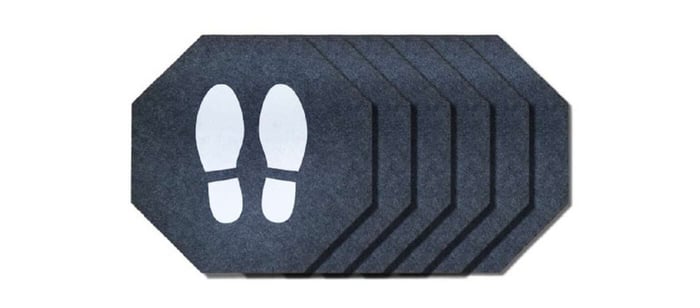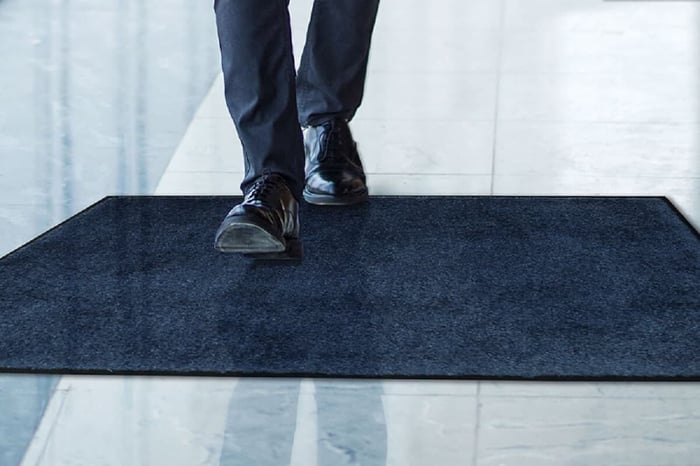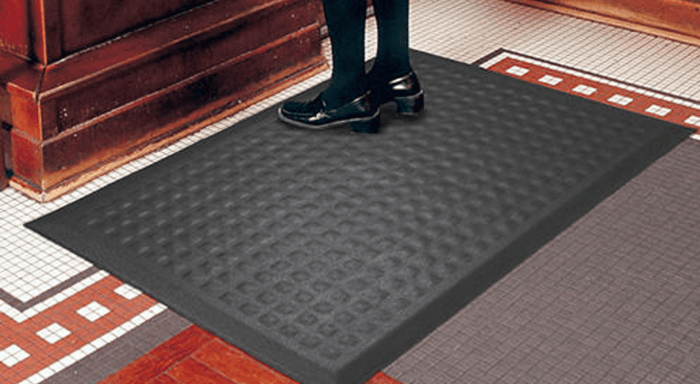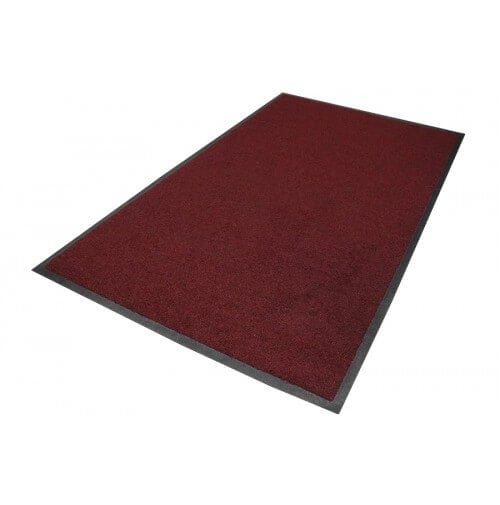Myth Busters: Industrial Floor Mat Edition
Myth Busters: Industrial Floor Mat Edition. The advent of the world wide web has exposed us to loads of information, but not all that information is accurate. Distinguishing fact from fiction can be difficult, so we’re busting some of the most common myths about commercial floor mats with our 50+ years of experience and some cold, hard facts.
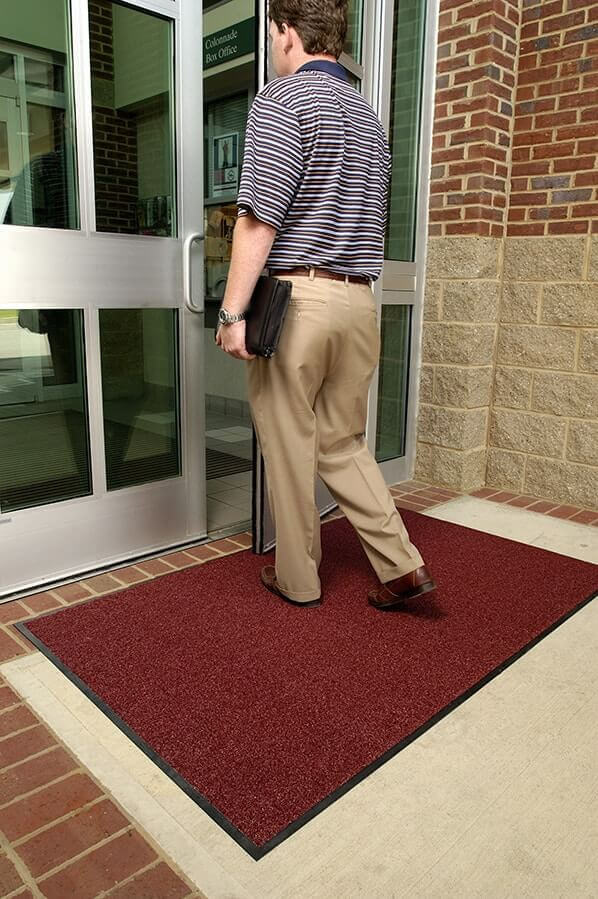
Myth 1: Mats have a clearly defined service life.
The service life of a industrial floor mat is finite, but the duration is highly dependent upon the environment in which it is placed and the way it is (or is not) maintained.

Just like any tool, those that are properly maintained will always last longer than those that are neglected. Commercial Entrance mats should be cleaned regularly to ensure the surface can continue to effectively remove dirt and moisture from your shoes to prevent tracking. Mats that are heavily laden with dirt, sand, and water are less effective. Anti-fatigue mats should be cleaned regularly to ensure the surface remains slip resistant and safe.
Service life is affected by usage to a large degree. For instance, let’s assume two identical manufacturing facilities purchase the same anti-fatigue mats. These facilities are identical in every way, except Plant A runs three shifts seven days a week, while Plant B runs two shifts five days a week. The mats in Plant B will be used roughly half as much as the mats in Plant A, and will subsequently have a much longer service life, pending no unexpected damage occurs to them.
Myth 2: The thicker the backing of a mat is, the longer it will last.
While thickness does affect the performance of a mat, it does not necessarily extend its useful service life. Thickness affects two mat attributes – movement and yarn shrinkage.
Mats with thicker backing are heavier and therefore less likely to move or “creep,” as we say in the industry. Thicker mats are recommended for areas with very high traffic, and areas with heavy cart or buggy traffic. However, in an application with moderate traffic, a 90-mil rubber mat will not last any longer than the same mat backed with 52-mil rubber.
Backing thickness also plays a role in shrinkage and rippling, which typically only applies to mats that will be regularly laundered. The fibers that make up the carpeted surface of a mat will shrink if exposed to high washing temperatures. Yes, even synthetic fibers will shrink if exposed to very hot temperatures. Nothing stays the same forever! As the fibers shrink, they begin to pull on the base of the rubber causing small waves to form in the border, referred to as “rippling.” The thicker the backing and borders are, the less likely it is to ripple because thicker rubber can more easily resist the pull of the shrinking carpet fibers. If you insist on consistently washing your commercial floor mats in hot water (>140°F), a thicker backing will prove to be a good investment as it will keep your mat in a good, flat position.
Myth 3: The softer the anti-fatigue mat, the better it is.
When you first hear this, it almost makes sense, but there is such a thing as “too soft.” When jobs require an employee to stand for long periods of time, blood flow to the lower extremities is restricted causing soreness and fatigue. Anti-fatigue mats provide support to muscles in the lower legs and back and promote subtle movement in the leg and calf muscles which results in increased blood and oxygen flow, preventing or at the very least delaying soreness and fatigue.
Compression deflection is the measurement used to gauge the displacement of the mat under pressure. A load is applied to the mat and the results show the deflection as a percentage. Typically, one load is applied at 20 psi (pounds per square inch) which equates to a 150-pound person. Another load is applied at 40 psi which equates to a 600-pound person. Research suggests that the optimum deflection is between 20% and 60%. Anything less than 20% feels too hard, while anything over 60% feels too soft.
Though it seems counter intuitive that a surface could be too soft, it’s true. When surfaces have too high a deflection, your leg and back muscles don’t move subtly to promote blood flow, they work harder to stabilize your body. So a mat that’s too soft can actually cause increased fatigue.
Myth 4: Mats cause more accidents than they prevent.
Mats are designed to help prevent accidents by keeping floors dry and providing added slip-resistance. However, just like seatbelts which are designed to minimize potential harm, they must be used properly in order to be effective. As long as you ensure the following criteria are met, your mats are far more likely to prevent accidents than they are to cause them.
- Use mats made from quality materials, especially in high traffic areas. Though vinyl-backed mats are often an alluring choice for the cost-conscious shopper, they do not perform well in settings with more than moderate traffic, and they are prone to cracking and curling around the edges. When this happens, if vinyl mats remain in service, they can become dangerous. If you’re looking for a mat that offers long-term durability and safe performance, invest in a rubber-backed mat. Rubber will lay flat. It will not crack or curl and will provide years of reliable service.
- Select the proper mat backing surface based on your floor surface. Industrial Mats placed on smooth floors like tile, wood, and marble will perform best with a smooth backing surface. A smooth back on a smooth floor creates the most contact between the two surfaces, and therefore the most friction which minimizes movement. Mats placed on carpeted floors will perform best with a full-cleated backing. Cleats are small nubs that grip the carpeted surface to minimize movement. In areas with very heavy foot traffic or cart/buggy traffic, you may want to consider alternative backing options designed to keep mats in place even in extreme conditions. Select M+A mats offer Anchor Safe® backing and suction backing.
- Maintain your mats properly. You wouldn’t neglect your automobile, skipping oil changes and tire rotations, and expect optimum performance from it, would you? Industrial Floor Mats are no different. They should be properly maintained to work effectively. This means regular cleaning to remove excess dirt, sand, and moisture. If you choose to store your mats, they should be rolled properly, never folded. This is especially true of vinyl mats. Unlike rubber, vinyl has “memory,” meaning if it remains in a position for a long period of time, it will not return to its original position. If a vinyl mat remains in a crumbled pile or the corners are bent or folded for a period of time, when you put that mat back on the floor, the humps/waves and bent corners will likely never lay flat again.
- There you have it Myth Busters Industrial Floor Mat Edition!

Direct Textile Store ships to all US states, including Alaska and Hawaii, US Territories, Canada, Puerto Rico, St. Thomas, and St. Croix.
Copy and paste this link to share:
<a href="https://directtextilestore.com/blog/myth-busters-industrial-floor-mat-edition/">Myth Busters: Industrial Floor Mat Edition</a>
About the Author
Haley Bridges, Marketing Assistant at Direct Textile Store
Haley Bridges has served as Marketing Assistant at Direct Textile Store, where she specializes in hospitality linens, uniforms, and bulk textile solutions. She works closely with hotels, restaurants, and healthcare facilities to match them with durable, high-quality products that balance both performance and value. Haley's expertise in textile sourcing and merchandising strategy helps businesses make confident purchasing decisions while staying ahead of industry trends.
If you need assistance, contact Direct Textile Store Customer Service at 800-615-5822

